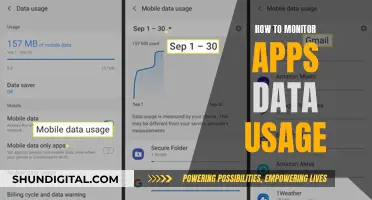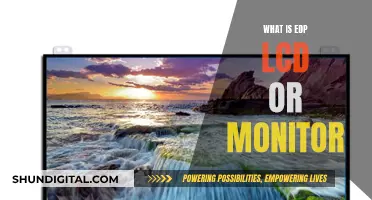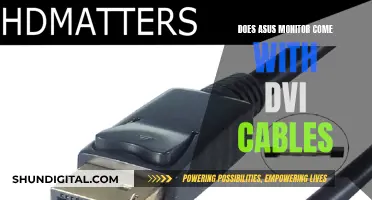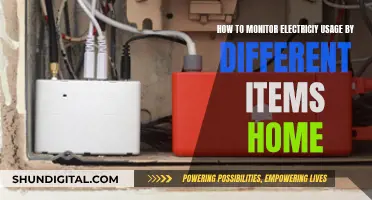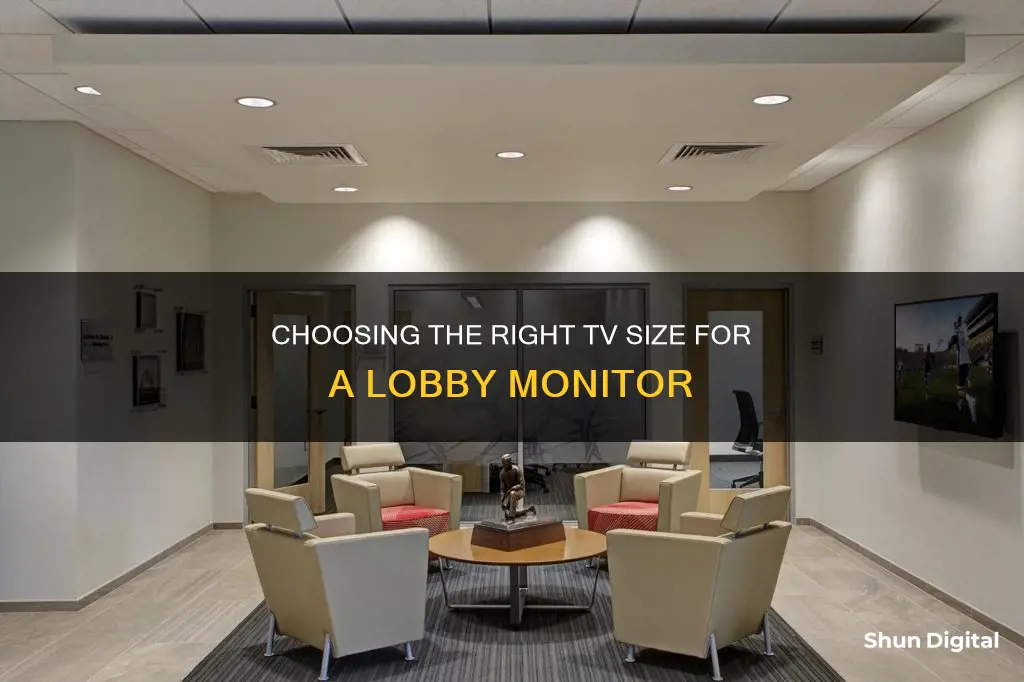
Choosing the right TV size for your lobby monitor is crucial for creating a welcoming environment for visitors and employees. While an older TV can work as a lobby display monitor, it's essential to ensure that it accepts HDMI input for compatibility with most digital signage players. The Screenly Player, for instance, supports 1080p Full HD content and live webpages. When selecting a TV size, it's important to consider the cost and your content plan. A video wall installation with multiple HDTVs can be expensive and may not be necessary for all businesses. Instead, opt for a more affordable option like the Screenly Player, which can support a single lobby display or a four-screen video wall. To create a compelling lobby experience, focus on regularly refreshing your content, including information about upcoming events, company updates, and branding materials.
| Characteristics | Values |
|---|---|
| Purpose | Display upcoming events, meetings, and room availability, as well as broadcast internal communications |
| Display Size | Large screen size |
| Display Content | Availability, reserved demographics, assigned guides, event capacity, event duration, price, etc. |
| Display Customization | Background colour, text colour, logo, and logo size |
| Display Management | Digital lobby signage software and hardware, such as Screenly |
| Display Mount | Heavy-duty monitor pole mount and floor stand |
| Display Devices | Lobby display monitor, digital signage player |
What You'll Learn

Viewing distance: How far away will viewers be?
When it comes to choosing the right size TV for your lobby, there are several factors to consider, including viewing distance, resolution, and budget.
The viewing distance is one of the primary factors when selecting the right size TV screen. As a rule of thumb, the further the viewing distance, the bigger your screen size should be. However, it's important to note that this is only part of the equation, as the right TV size also depends on the resolution of your screen.
A good viewing distance for a 1080p Full HD resolution TV is roughly 1.5 to 2.5 times the screen size. For example, if you have a 50'' TV, the optimal viewing distance would be between 6.5 and 10.5 feet.
Since a 4K Ultra HD TV has a higher resolution and more pixels than a 1080p Full HD screen, you can sit closer—roughly 1 to 1.5 times the screen size—and still get an immersive viewing experience without recognizing any pixels. So, for a 50'' 4K UHD TV, the optimal viewing distance would be between 4 and 6.5 feet.
It's worth noting that these numbers are rough estimates and can vary depending on the source and content being displayed. The type of room and how the TV will be used can also impact the ideal viewing distance. For example, in a lobby or waiting area, you may want to consider the average distance people are likely to view the screen from, taking into account seating arrangements or other factors that may influence how close people can get to the screen.
Additionally, the Society of Motion Picture and Television Engineers recommends a minimum viewing angle of 30° for a good experience, while THX recommends a 36° to 40° horizontal viewing angle for a more immersive experience. To achieve a 30° viewing angle, multiply the seating distance by 0.6 to get the ideal TV size. For a 40° viewing angle, multiply the seating distance by 0.84.
For example, if your seating distance is 96", a 58" TV will provide a 30° viewing angle, while an 80" TV will provide a 40° viewing angle.
Resolution: Does It Matter?
The resolution of your TV screen also plays a significant role in how far viewers can be to comfortably watch the screen. A 4K UHD resolution (3840 x 2160 pixels) allows you to sit much closer to the screen compared to a Full HD (1920 x 1080 pixels) model of the same size without noticing individual pixels.
With a higher resolution, you can sit closer to the screen and enjoy a more immersive experience. This is especially beneficial if you intend to use the TV for detailed content, such as architectural or medical information with annotations and fine print.
Budget: How Much Are You Willing to Spend?
Lastly, your budget will play a crucial role in determining the size of your lobby TV. As a general rule, the price of a TV increases with its size. Therefore, if you want to fully appreciate the 4K UHD resolution from a comfortable viewing distance, you will need to invest in a larger screen, which tends to be more expensive.
However, it's worth noting that 4K UHD TVs have become more affordable in recent years, and almost all movies and streaming services are available in 4K, making them a more attractive option.
Setting Up Audio on Your ASUS Monitor
You may want to see also

Content: What will be displayed on the screen?
The content displayed on a lobby monitor will depend on the nature of the business or organisation. However, there are some common uses for lobby monitors that can be applied across various settings.
One of the primary functions of a lobby monitor is to provide helpful information to visitors. This can include practical information such as room booking and event schedules, wayfinding assistance, and staff directories. For example, a hotel lobby monitor might display check-in and check-out times, room availability, and a directory of staff members. A lobby monitor in an office building could inform visitors about upcoming events or meetings, room bookings, and general company updates.
In addition to providing practical information, lobby monitors can also be used to showcase branding and promote a positive first impression of the company or organisation. This could include displaying the company logo, images or videos that reflect the company's values and culture, or even a live social media feed featuring a specific hashtag.
For businesses that offer products or services, lobby monitors can be an effective marketing tool. For example, a gym or medical facility could display information about the services they offer, along with pricing and staff introduction videos. A school or art gallery might use a lobby monitor to display information about upcoming events or exhibitions, while a stadium or concert hall could use it to showcase a list of upcoming games or performances.
Lobby monitors can also be used to improve the overall visitor experience by providing entertainment or useful information while they wait. For instance, a dental office lobby could display dental hygiene advice, or a hotel lobby could provide city tour tips.
Furthermore, lobby monitors can serve as a wayfinding tool in case of an emergency, providing visitors with detailed instructions on how to act and where to find the nearest exit.
By utilising a combination of these content ideas, businesses and organisations can create an informative, engaging, and aesthetically pleasing lobby experience for their visitors and employees.
Best Monitor Arms for the Asus VG278Q
You may want to see also

Cost: How much are you willing to spend?
The cost of a TV for your lobby monitor will depend on several factors, including the size, brand, and features you choose. When considering the cost, it's important to keep in mind that a lobby TV is an investment that can enhance your brand image, improve customer experience, and even boost sales.
First, let's talk about size. The size of the TV will depend on the dimensions of your lobby and the distance from which people will be viewing it. As a rule of thumb, the diagonal length of the TV screen should be about half the length of the lobby. Additionally, you can determine the appropriate screen height by dividing the distance of the furthest viewer from the TV by six.
In terms of brand and features, you have a variety of options to choose from. Older TVs or less expensive brands can work just fine as long as they have an HDMI input, which is compatible with most digital signage players. If you're on a tight budget, consider purchasing a used or refurbished TV, but make sure it's in good working condition.
On the other hand, if you have a larger budget, you might want to invest in a higher-end TV with advanced features such as 4K resolution, smart capabilities, or a curved screen. These additional features can provide a more immersive and engaging experience for your customers.
Another cost to consider is the installation of the TV. You may need to hire a professional to mount the TV securely and connect it to your content source. Additionally, if you plan to display content regularly, you might want to invest in a digital lobby signage software subscription, which typically costs around $20 per month. This software allows you to manage your content remotely and schedule updates, ensuring that your lobby TV remains engaging and up-to-date.
Finally, don't forget to factor in the ongoing costs of electricity and content production. Lobby TVs can consume a significant amount of power, especially if they are large or high-resolution models. Additionally, consider whether you will create the content in-house or outsource it to a professional. Producing high-quality content may require additional expenses, such as licensing fees for music or video clips.
In conclusion, the cost of a TV for your lobby monitor can vary widely depending on your specific needs and budget. By considering the size, brand, features, installation, software, and ongoing costs, you can make an informed decision that aligns with your financial constraints. Remember, a lobby TV is an investment that can have a positive impact on your business, so choose an option that best represents your brand and engages your customers.
Monitoring Water Usage: Can You Track and Save?
You may want to see also

Installation: What hardware and software are required?
To install a TV as a lobby monitor, you will need the following hardware and software:
Hardware
- A TV or display monitor: This can be an older TV, as long as it has an HDMI input, which will make it compatible with most digital signage players.
- A digital signage player: This is a small mini-computer that connects to your TV and allows you to display content. Examples include the Screenly Player, Brightsign, and Xola TV Monitor App.
- Connection cords: Ensure you have the necessary connection cords to connect your digital signage player to the TV.
Software
- Lobby display software: This software enables you to manage your digital lobby signs remotely. Examples include Screenly, lobbyTV, and Xola TV Monitor App.
- Content management: You will need to create or source content to display on your lobby monitor. This can include information on upcoming events, company updates, dashboards, company news, weather, etc. Some software, like lobbyTV, offers AI-powered content gathering based on your chosen topics or target customers.
It is important to note that the specific hardware and software requirements may vary depending on your needs and the size of your lobby monitor setup. Additionally, you may need to consider mounting hardware and reinforcement of the wall you will be mounting the screen on.
Monitoring Comcast Data Usage: Tips and Tricks
You may want to see also

Size: How big is the lobby?
The size of the lobby is an important consideration when choosing a TV for a lobby monitor. The TV should be proportionate to the size of the lobby and not look too big or too small in the space. Measure the height, width, and depth of the lobby to determine the maximum TV size that can fit in the space.
If the lobby is large, a bigger TV may be more suitable to ensure that the content on the screen is visible to people in the lobby. In a smaller lobby, a smaller TV may be more appropriate to avoid overwhelming the space.
It's also important to consider the distance between the TV and the viewers. In a larger lobby, people may be standing or sitting further away from the TV, so a bigger screen may be necessary to ensure the content is visible. In a smaller lobby, people may be closer to the TV, so a smaller screen size could be sufficient.
Additionally, the layout of the lobby should be considered. For example, if there are columns, walls, or other obstructions in the lobby, a bigger TV may be needed to ensure that the screen is visible from different angles.
The number of people in the lobby at any given time is also a factor to consider. If the lobby is often crowded, a bigger TV may be more suitable to ensure that everyone can see the screen.
Overall, the size of the lobby, the distance between the TV and the viewers, the lobby layout, and the number of people in the lobby should all be taken into account when deciding on the size of the TV for a lobby monitor.
Maximizing Your Hyper-V Experience: Monitor Size and Beyond
You may want to see also
Frequently asked questions
A TV monitor in a lobby can be used to engage with visitors, providing them with information about the company, upcoming events, and available services. It can also be used to display branding and promotional content, creating a professional and welcoming environment.
The size of the TV monitor depends on the dimensions of the lobby and the distance from which visitors will view the screen. As a general guideline, the Society of Motion Picture and Television Engineers recommends a viewing distance where the screen fills a minimum of 30 degrees of your field of vision.
When choosing a TV monitor for your lobby, consider the resolution, viewing angle, and compatibility with your content and media players. Ensure the monitor has the necessary inputs, such as HDMI, to connect to your devices.
You can use digital lobby signage software, such as Screenly, to manage your lobby TV content remotely. This allows you to upload new content and schedule it to play at specific dates and times.
Consider the placement and mounting options for your TV monitor. You may need to reinforce the wall or choose a free-standing solution. Additionally, think about the number of screens you plan to install and the associated costs of the hardware and software.



